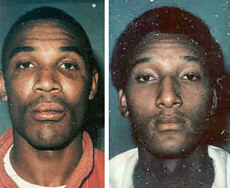The mistakes made in this case that resulted in Cotton’s wrongful conviction are largely due to eyewitness inaccuracy. According to the Innocence Project, more than 70% of wrongful convictions are cases that contained eyewitness misidentifications. As mentioned before, Thompson made sure to study the face of her assailant during the assault, hoping to procure certain details of him that would aid the police in their investigation. However, certainty does not always equate to accuracy. Studies have shown that certain characteristics of the crime tend to affect eyewitness accuracy, such as the amount of time the culprit is in view, the lighting, the presence of a weapon, and the distinctiveness of the culprit’s appearance (Wells & Olson, 2003, Eyewitness Testimony).
Jennifer’s rape occurred around 3 AM, meaning that it was still dark outside and in her room. Multiple times Thompson attempts to lure her assailant into the light, but he knows not to fall for her trick. Thus, Jennifer was only able to study the face of the rapist while he was attacking her in the darkness of her bedroom, meaning that it would have been difficult to identify specific details of his face. She even notes in her book that she “struggled to focus” her eyes in the “fuzzy dark” of her room.
The presence of a weapon also tends to affect the accuracy of eyewitness identification. Jennifer was raped at knife-point. In a state of panic, with the presence of a weapon, victims tend to focus on the weapon rather than the assailant. This is known as the weapon-focus effect. Jennifer could have very well focused on the knife more so than the face of her assailant.
Lastly, the distinctiveness of the culprit’s appearance also tends to affect eyewitness identification. Although Jennifer claims in the book that she noted certain characteristics of the assailant, such as his “distinctly almond shaped” eyes and his “high, broad cheekbones,” it is important to note that the victim and the assailant were of different races. Thompson is Caucasian and her assailant was an African American. This difference in race can affect the victim’s ability to identify his or her assailant. With what is known as Own Race Bias, individuals have the tendency to recognize and differentiate between faces of our own race more easily than faces of another race. Thus, since Jennifer’s assailant was of a different race, she had difficulty picking the perpetrator from the lineup, and ultimately picked the wrong person.
During the physical lineup, Thompson notes that she assumed one of the men in the photos was the suspect because she did not think the detectives would call her to the station otherwise. Thompson also notes that “the stakes felt awfully high” and her heart was racing, showing she felt pressured to choose one of the men. In the photo-lineup, Thompson identified Ronald Cotton. Afterwards, she asked if she did ok, and the officers told her she did great, washing away any doubt she had regarding the identification. This occurs again with the physical lineup. This is known as Confirmation Bias. Confirmation Bias is a psychological phenomenon. Once a victim and law enforcement feel as if they have caught the “right” suspect, they tend to seek out information that confirms their existing opinions. This self-confirmation causes them to overlook or ignore information or evidence that does not confirm their preconceived beliefs. This Confirmation Bias becomes apparent in this case when the justice system chooses to ignore the possibility that Bobby Leon Poole, another convicted rapist, is Thompson’s actual rapist. Poole begins bragging in prison that Cotton is in jail for a crime that Poole actually committed. Poole is brought to the appeals trial, in hopes that Thompson will identify Poole as her rapist, not Cotton. However, Thompson has already zeroed-in on Cotton as her assailant, and does not even recognize her real rapist when he is sitting right in front of her.
Pictured below is a side-by-side comparison of Bobby Leon Poole and Ronald Cotton, whose similarity in appearance is striking.
Bobby Leon Poole (left) and Ronald Cotton (right)
Source: http://old.post-gazette.com/images3/20050508ap_poole-cotton_230.jpg
Below is a paper slide video on the causes of Eyewitness Errors:
